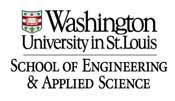Because of the chemical similarity of sulfate (SO42-) and selenate (SeO42-), concentrations of selenium in wet flue gas desulfurization wastewaters can be very high (1000’s of micro-g/L). New draft effluent guidelines for coal-fired power plants have limits of 10-20 micro-g/L for selenium, but this element is notoriously difficult to remove. Electrocoagulation can produce iron oxides that efficiently adsorb many contaminants, but when operated in its normal mode with full aeration it only removes about 50% of the selenium in water. However, electrocoagulation with limited aeration can produce highly reactive Fe(II)/Fe(III) solids known as green rusts, and green rusts can rapidly remove dissolved selenate by chemical reduction to insoluble elemental selenium. These recent observations offer a path toward a new selenium removal approach that involves modification of iron electrocoagulation, which is an off-the-shelf technology already applied at full-scale in other sectors. The objective of the proposed project is to optimize the performance of iron electrocoagulation for selenium removal from process waters associated with coal utilization. We will pursue this objective in an approach with three integrated tasks. Task 1 will be a set of bench-scale electrocoagulation experiments that systematically explore the influence of operating conditions on performance. In Task 2 we will apply advanced spectroscopic techniques to determine the chemical forms of the immobilized selenium and assess the stability of selenium in the solids that are produced. To move the approach closer to scenarios for full-scale implementation, Task 3 will examine selenium removal using a commercially available flow-through reactor.

